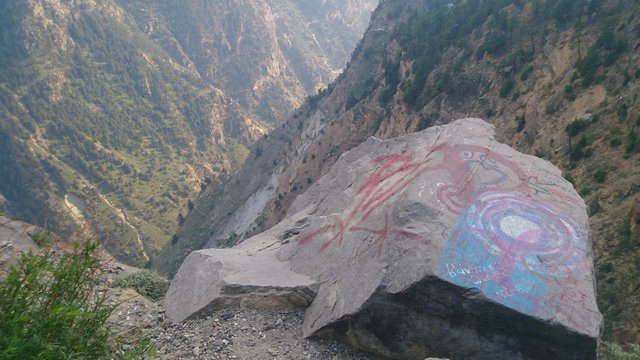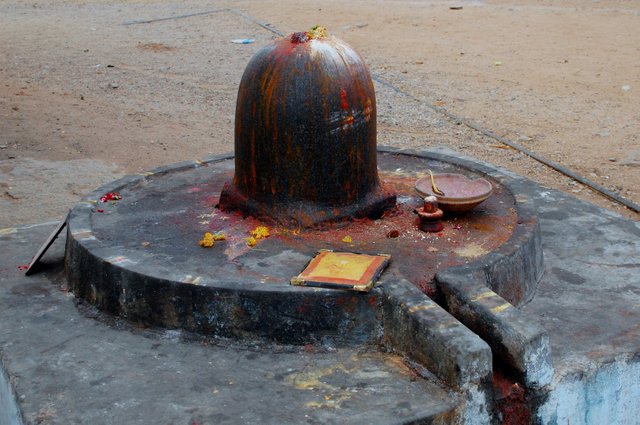Most archeologist, historians and or researchers that are doing surveys, analysis and working with the remaining problems surrounding the Indus Civilisation all concludes that around 1900 BC, this civilization ended; it is still considerable controversy about how this civilization fell — speculating about a hypothetical scenario to at least have an idea of how this mighty empire died out. Two ways in which the Indus culture ended are now at the forefront.
The first scenario was due to the perpetuation and development of the Aryan migration myth that was postulated by Max Muller and other Sanskrit scholars. The migration theory fell apart when they eventually found the remains of the Indus culture, but the argument about foreign influence on Indian affairs continued with another name, the Aryan invasion theory.
Being a theory with a lot in stake for scientists, financial, pride, prestige, and cultural propaganda are some of the excuses why the speculation about the Aryans is kept alive even until this day.
Instead of stating the obvious that Indian culture is native to India, the new way of perpetuating their hypothesis about an Aryan migration, was by trying to exemplify, that the lost civilization of the Indus had nothing to do with subsequent Indian culture. However, by believing in the Indian’s own account, historians needed to conclude that ancient Indian philosophy, history, and science was by far more developed in the ancient world and more affluent than any other European culture at that time.
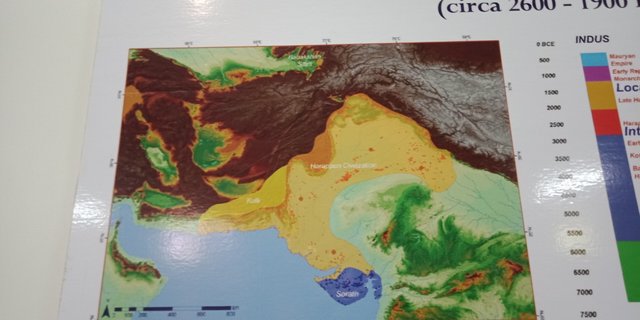
It was the British archaeologist Mortimer Wheeler that coined the term ‘’Aryan invasion theory’’. Wheeler argued that instead of seeing the Aryans as a migrating people, the great movement of people we have come to know as Aryan was due to them being an invading force instead. This force was the sole factor in the fall of the Indus culture.
He built his theory from an archeological survey done at Mohenjo Daro, one of the major cities of the Indus Valley. Wheeler pointed towards the proof of a family of skeletons that were found in one of the houses he excavated. He considered this to be evidence of a genocide executed by the Aryans whom eventually, according to him, destroyed the Indus Valley Civilisation in an enormous massacre and or a gruesome invasion.
It was Mortimer Wheeler who stressed and firstly contemplated that the Indus culture had no direct connection to the present form of Indian culture. According to him, most of the cultural expressions of India was due to these Aryan invaders conquering the valley of the Indus to commence the Vedic age. The Aryans were perceived as stated before to be a superior culture bringing with them most of the distinct Indian culture we have come to know today.
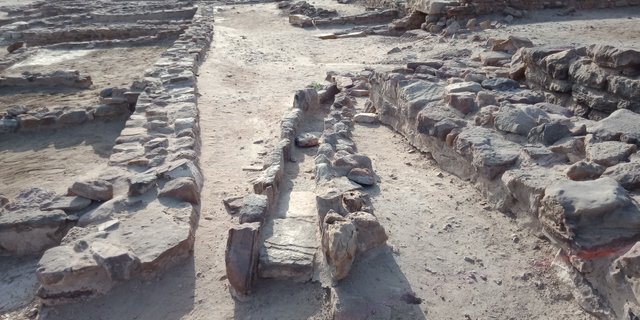
Three historical proofs that point towards that Wheeler is wrong.
Many of the Indus Valley Civilisation cities were already abandon long before the supposed invasion to have taken place. There is no literary evidence in any of the sacred scriptures that I have read from India that mentions an invading force of Eastern Europeans or a Central Asiatic group of people for that matter.
Most invaders usually leave something behind to the afterworld and historians or archeologists can find clear proof of how society changed subsequently. Concerning this, these supposedly Aryan invaders left no mark, except, the hegemonic culture they brought with them. No monuments, no settlements, no indications that they were ever in India gives us no clear perspective concerning the appearance and or of any information about this culture group.
Artifacts are indicating strong ample evidence that the cultural transfer between the Indus Valley civilization and the Vedic civilization took place a long time ago and gave rise to the subsequent historical, religious, scientific and philosophical developments of India.
Subsequently, this will prove, once and for all, that the civilization we understand to be inherently ‘’Indian’’ was not due to a foreign invasion or a cataclysmic migration but moreover to a social process that sprung out from a much older civilization living on the Indian sub-continent predating the Vedic age.
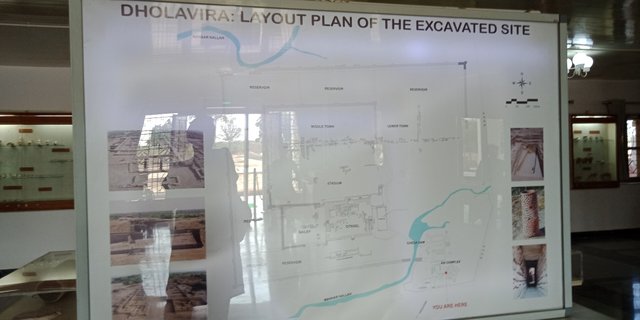
The earliest civilizations to date were ''river'' civilizations, and the Indus Valley was no exception. Being located on the banks of the river Indus, the people living on the banks of the river Indus were strictly dependant on their water supply. Having a large river that flooded twice a year reliably the land area on which the Harappan civilization was located became an ideal place for the genesis of one of the oldest civilizations in history.
The monsoon hits India every year during late spring; it continues throughout summer. This annual natural phenomenon would cause the rivers to overflood. It was in many ways a great event, in some cases, even celebrated, mainly because when the water receded it brought with it fresh soil rich in minerals that would fertilize their agricultural fields in otherwise dry areas of India and Pakistan.
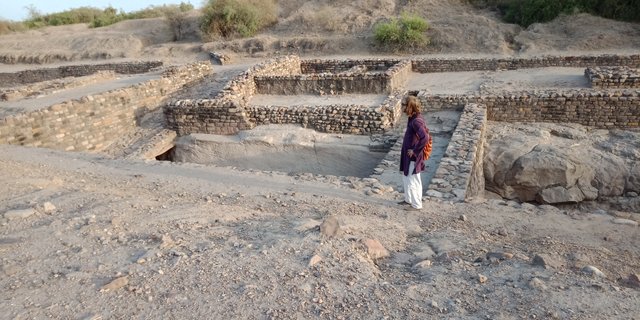
They have found remains from old stone structures and of dams that were in use to control the water flooding over. Building highly complex irrigation systems the Harappan people pioneered in building reservoirs and aqueducts that carried the water to their plantations but also all the way to the heart of the city.
In Dholavira an Indus settlement located in the state Gujarat in India, an ancient settlement that covered an area of 13 hectares and had a population of twenty-thousand. Archeologists have found a complex water system that served the needs of the city, interestingly enough the layout of every city was connected to a centralized drainage system. Water was not only used for drinking or irrigate the plantains but apparently to clean the streets too; it was even used to facilitate public toilets that were unique to the Indus culture. Eventually, the water ran out of conduits that carried it out of the city walls.
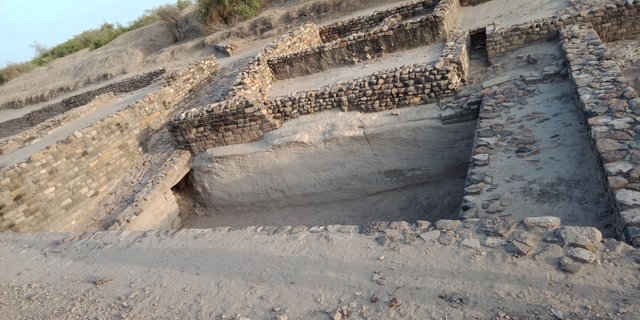
These ancient people mastered rivers in a way that even today is truly impressive. The quality of their drainage system was so advanced that we have to wait until the Roman empire to find similar achievements that can even come close to the complexity of these water systems. Europe during the middle ages did not also have anything close to what these people invented and used for a very long time.
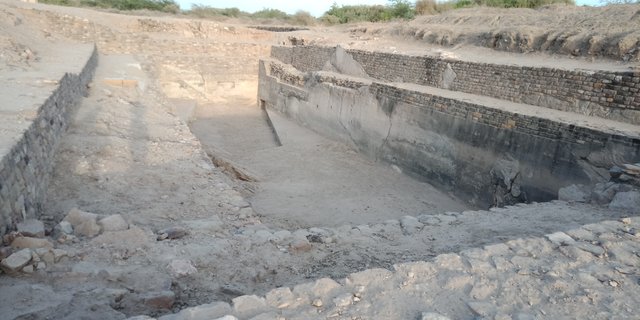
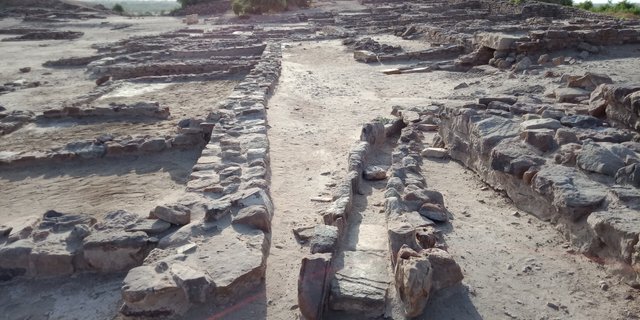
These irrigation systems represent the ability for humanity to discover new forms of technology, like fire, stone tools, agriculture, the wheel, written language. These inventions fulfil one of our purposes to our existence to discover universal principles and incorporate them into the lives of humanity to change the relationship between us, nature and the universe at large.
Through numerous excavations throughout the 1900s, it has come to our knowledge that this culture not only flourished on the banks of the Indus River. Sites have now been found in areas far away from water sources, over 150 sites are located in western India - peculiarly situated in inhospitable desert areas. By placing your settlement here would make life nearly impossible to bear in environments that are close to inhabitable. A puzzling fact indeed, when visiting Dholavira, it crossed my mind several times that if they did collect water in these very impressive water reservoirs, and being far away from the Indus River located in the Rann of Kutch a salt dessert from what river did they collect water?
Even until this day during the monsoon, the massive amounts of water it brings forth eventually forms every year a new river, namely the River Hakra. Hakra is a seasonal river that flows through the Indian subcontinent partially in the state Rajasthan during the monsoon. However, from observing the area with satellites, scientists have now found evidence that the river path on which the Hakra river flows was once connected to a much longer river bed stretching from the Himalayan Mountains down to the West coast of India. The way on which the scientists believed the river flowed through, is precisely correlating to those now abandoned and desolated settlements like Dholavira, Kalibangan, Lothal, and Rakigarhi. Both Harappan and pre Harappan settlements are found throughout these inhospitable areas.
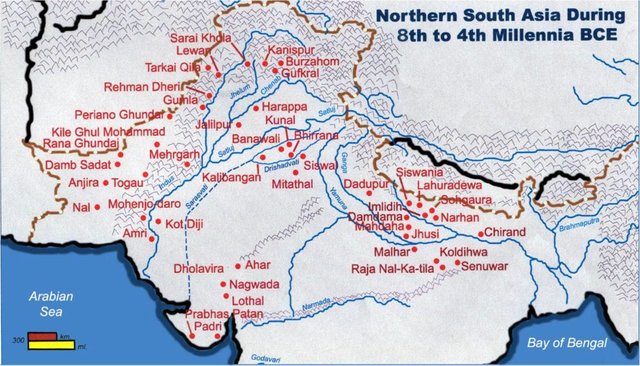
Without any alternative explanations of why these ancient settlements are situated as they are, and when finding old river channels that connect to an already existing river bed, this gives credence to an already existing theory about the genesis of Indian civilization.
In the sacred texts of the Rig Veda - the unknown authors refer to an ancient river called Sarasvati. It was said to be the mightiest river of them all, long before the worship of the Ganges and Yamuna rivers that today holds a central role in Indian religious thought. Sarasvati held the primary position as the holy river to their civilization presented in the Rig Veda; this mythical river was so important to them that it eventually became a venerated goddess worshipped even to this day.
Another fact presented in the Rig Veda is that there is a reference to a specific hymn with the name of Ghagar Hakra. In this hymn, it is said, that the Sarasvati did begin to dry out and receded slowly but surely, following this line of thought, could it be that the ancient Vedic writers did experience a different geophysical environment that now is largely known only in myth.
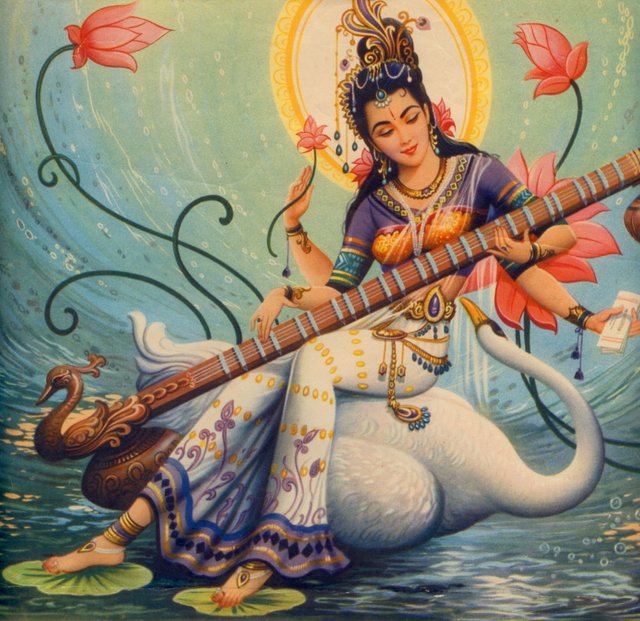
Or as Dr Radakrishna said. ‘’Geological record points to a period of aridity 10,000 years ago, at the end stages of Pleistocene glaciation, which gradually changed to a wet phase. Copious rainfall in the Himalayan region gave rise to innumerable rivers which flowed down in cascades bringing enormous amounts of water and silt. The plains of Punjab, Rajasthan and North Gujarat thus came to be one of the most fertile places on earth.’’
The last ice age happened some 200000-12000 years ago; this period is marked as one of the most critical points environmentally in history. Pre Harappan sites, such as Rakhigarhi and Bhirrani have been found on the Indian subcontinent dating back to around 8000 BC, so there were settlements during the end of the last ice age in India and Pakistan. In other words, there is a high possibility that people lived on the Indian subcontinent at this time that would be able to observe and then start an oral tradition surrounding the significant changes environmentally that might have occurred.
One might also speculate about the universal flood myths of the ancient world and if these cultures that lived at the time of the last ice age or just very close to the end of the previous ice age invented the stories about the floods only from observing the cataclysmic result of the rather large glaciers melting and that caused a drastic change in the environment.
Most of the great rivers of India begin their descent towards the ocean in the glaciers of the Himalayan Mountains, and on their way towards the sea transports massive amounts of water every day. Imagine this happening at the time of the last ice age, where a more considerable amount of glaciers and a period of more rain would eventually overflood the low lands of the Indian subcontinent. Causing new rivers to form, and over time and through a decreasing influx of water flowing through the Himalayas these flooded areas like Hakra River today would gradually disappear and vanish.
So in a much similar way to how the Hakra river today is flourishing and disappearing because of the monsoon rains, could it be that this river once flowed through India and fertilized these settlements?
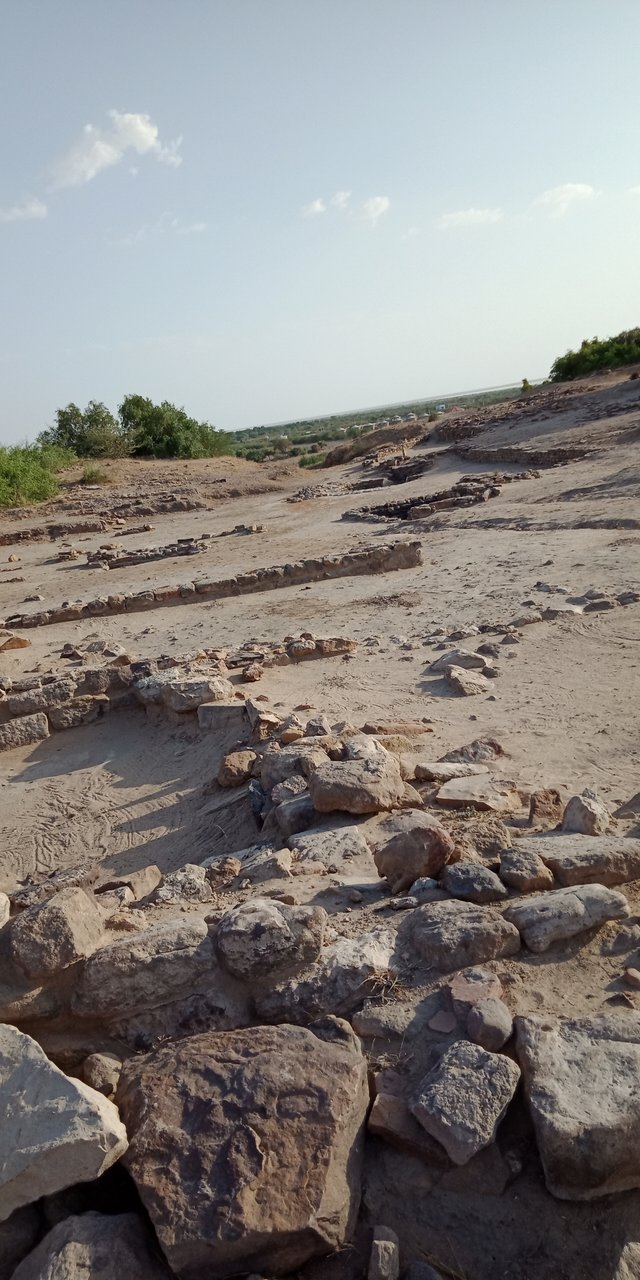
Some researches conclude that the drying out of the remains of the Hakra River was gradual and the time given to the last part of the remains of the Sarasvati was around 4000 years ago. Which correlates strongly with the descent of the Harappan empire, today because of changes in the climate many researchers say that the large rivers of the Himalayas are endangered in much of the same way that the ancient Sarasvati is said to have dried out. Because of the decreasing glaciers in the Himalayas, the water levels of India has decreased 15% since the last 30 years. So, in the future, some rivers on the Indian subcontinent might face a similar fate as the Sarasvati river did.
It must be the most rational explanation yet, of why these rather large settlements are to be found in areas completely arid and harsh. In other words, the Indus Culture once lived on the banks of a mighty river now only mentions in myths and as a result of the climatic changes started to manage their resources unsustainably to the point that their civilization became unbearable. So we might have to rename the Indus culture too, Indus-Sarasvati culture.
Taking this to be true, subsequently, it brings us into the debate of the age of the Rig Veda, the current theory postulated by Max Muller, surrounding the Vedas is that around 1500 BC the Aryans wrote them down some four hundred years after the great fall of the Harappa empire. It is said, that they stem from the oral tradition of the Aryan culture; and through time these stories became much later the bulwark of what we refer today as Hinduism. However, some problems arise here, because what the Vedas itself says does not contradict modern archeological finds.
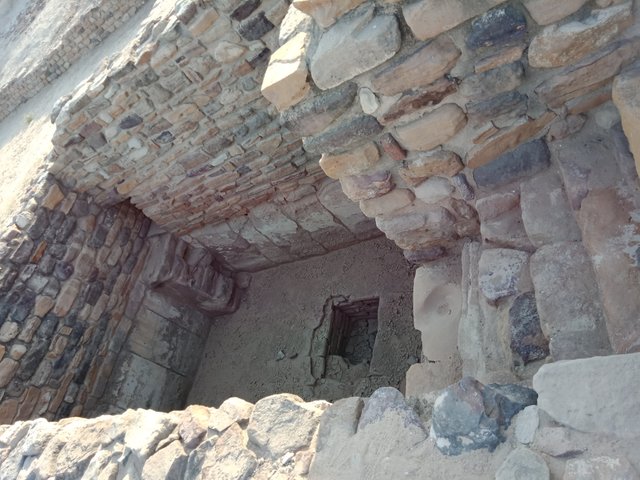
‘’Many of its skillfully composed hymns are replete with statements that have great relevance for the careful student of early Indic history. The most significant conclusion drawn from the geological references contained in this archaic hymnody is that the sagely composers of the Rig- Veda must have lived prior to the great cataclysm around 1900 b.c., for they still knew of the “seven rivers," notably the Sarasvati.
Thus we may take 2000 b.c. to be the lower limit for the composition of the Rig- Veda. Very probably it is considerably older. The subsequent Vedic literature—particularly the Brahmanas and Arart^tfto—reflect a geography that is different from the one depicted in the Rig-Veda. Although some Brahmanas mention the Sarasvati River as an important place of habitation, these later works show signs of an eastward migration of the Vedic peoples. As the later Vedic literature unfolds, the Sarasvati recedes more and more into the background and the Ganges gradually comes to the fore. ‘’
Georg Feuerstein, Subhash Kak, and DavidFrawley, In Search Of the Cradle Of Civilization Page 104-105
However, how could the Aryans emphasize the importance of a river that dried out thousands of years before they even reached India? How could they know anything about the geological environment at the end of the Ice age in South Asia? Well, it is quite obvious to say that the author of the Rig Veda whoever they were, were somehow aware of some of the geological environment at the end of the Ice Age, which would also correlate to the new finds of Rakhigarhi, Bhirrani and Mergarha, a pre Harappan settlement in Haryana and in Balochistan in Pakistan that dates back to 10000 BC. Could the oral stories about an ancient river derive from there? Actual people living and experiencing the environment at the end of the ice age.

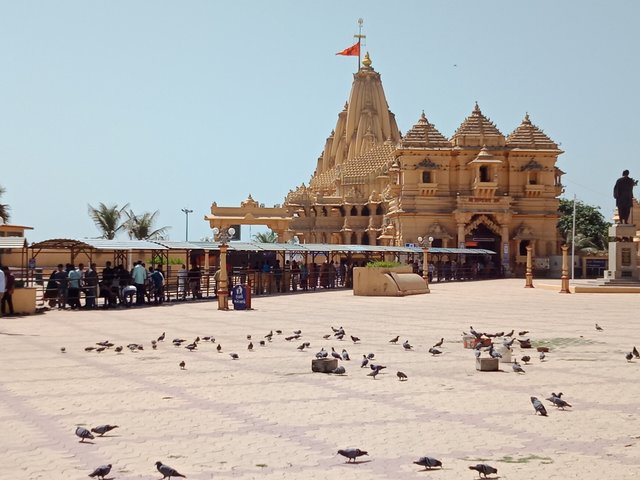
Ancient Religion
Being a mystery indeed, our ignorance and lack of knowledge about the Harappan language has not given us any substantiated understanding about their social organization, in other words, their political, intellectual and religious life is mostly unknown to us. With organized settlements, social organization general follows, and there are clear signs from the available records of a political structure with authority, city planning, and extensive trade.
However, what we do know is that long before technology, the internet, nuclear physics, and everything else that consists of what we refer to as ‘’modern’’ life was the living factor in our civilization, an older form of government had the political power, namely, Religion. Religion had a particular responsibility in society because it held both the position as the spiritual overhead as much as it had political power.
The belief of the earliest religions worshiped a mixture between animism, polytheism, and monotheism, animism means, ‘’the notion that spirits inhabit nature and that these spirits could communicate with us and the world we inhabit,’’ polytheism implies the belief in many gods, and monotheism means the faith in one God. The healing of the sick and the production of remedies for people in need are one of the oldest priestly sciences we know of. Ancient man and his strive to understand the firmament is also an ancient science, and so what we refer to as Astronomy and Astrology today are as old as civilization itself.

Pashupati
Shamans or other medicine men attempted to look for a remedy in the service of a dying man. The priest would use ceremonies including sacred dances as a healing ritual and use herbs and other psychoactive substances to induce trancelike states to communicate with spirits.
We find these kinds of animistic symbology on Harappan seals, and on the copper tablet from Mohenjo Daro, we see evidence of a depicted Shaman priest visualised as a wild hairy man. This is said to be one of the idols of worship the Indus culture worshiped, namely Pashupati.
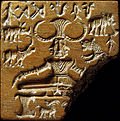
With unambiguous animistic symbology such as horns, a bow, animals and other beasts are said to act like guides from the spirit world, these animals or spirit guides surrounds the Shaman on their iconography a common theme not only used by the Indus Culture but also used by other animistic religions.
Interestingly enough the Pashupati figure is sharing many characteristics with one of India's most famous and important God’s, namely Shiva. Shiva makes up one part of the Trimurti. The Trimurti is the representation of the cosmological system in Hinduism, Hinduism says that the creative process in the universe is divided up in three parts. Brahma the creator, Vishnu the preserver and Shiva the destroyer, the Hindus believe that the world goes through three perpetual stages of existence and Shiva occupies the part where transmutation occurs.
Pictured either with a Bull ‘’Nandi,’’ Shiva can also be seen seated in yoga position on top of the Himalayan mountain. There are some striking symbolic similarities between Shiva and Pashupati; here we can find the God figurine Pashupati seated in a Yoga position. Another seal found in Mohenjo Daro is this one, where Pashupati is seated amongst his spirit guides but now specifically holding a serpent in his hand - interestingly enough Shiva is usually represented with a snake or serpent.
Moreover, some claim this to be evidence that the god Shiva or the Vedic representation of Shiva, Rudra, was worshiped in the form of Pashupati or the Shaman god of the Indus Culture. The same people claim that Shiva is an adaptation of the early Indus God and not an Aryan invention of later stages of Indian religious thought.

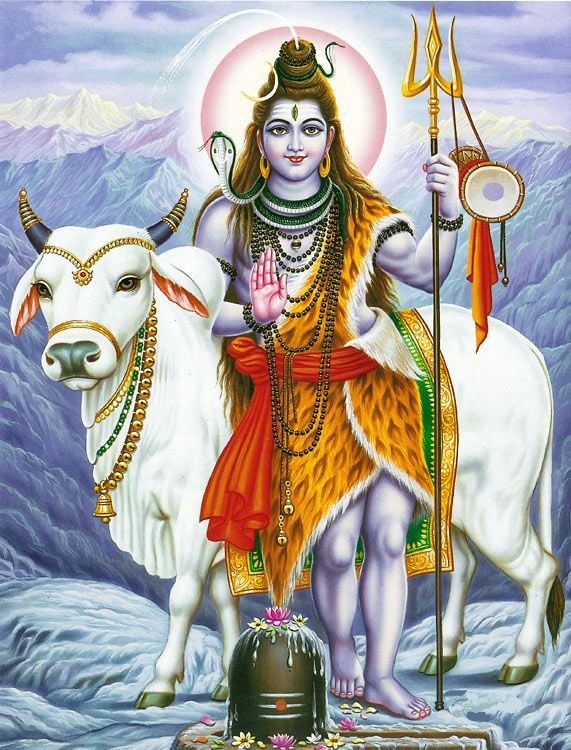
One of the earliest forms of a plowed field in the world was found in the Indian State Rajasthan located close to a village called Kalibangan. Being one of the oldest sites to date, excavations executed here shows early development of agricultural technology in the Indus-Sarasvati civilization, a social organization and a form of technological development that would eventually spark a revolution that would change the world around them.
Being a pivotal point in historical developments humanity started to live and organize economically in a way that was now dependant on the domestication of animals and of growing crops for survival. Humanity went from one kind of economic model to another - a model that was solely dependant on social cooperation, social organization and the preservation of food instead of living by nomadic standards, moving from one pasture to another following the seasonal changes. Not only did they, the early agriculturists started to sow the seeds of their plants, but they sowed the seeds of the kind civilization that we live in today.
The inhibitors of the Indus-Sarasvati Valley lived mostly in rural areas, small towns and villages earning their daily bread of the land. As with most other facts that deal with the ancient world, we know very little about what drove humanity into the development of organized settlements. Our foreknowledge about the incitement to start planting cereals rather than harvesting them remains a mystery.
Different possible explanations are that:
- Agriculture was a way to tackle a growing population base following the most recent ice age.
- Agriculture was a way to tackle fluctuations in the climate that triggered a decline in natural food sources.
- Or it could have religious reasons, where the celebration of feasts cemented social bonds and may have created the need for food surpluses.
By believing nature being inhabited by spirits and now being completely dependant on the harvest, most of the ancient agricultural civilisations developed fertility cults, the definition of which is; ‘’a system of nature worship involving rites and ceremonies believed to ensure productiveness of plants, animals, and people and often directed toward the propitiation of a special deity’’.
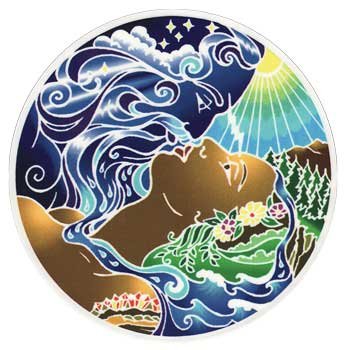
Looking for an explanation to the creation of the universe, ancient man realized early on that the sole reason for the growth of plants and the cause to the changes in the seasons, was a relationship between the earth and the sky.
The sexual act became something mysterious, and it seemed to the ancients that it mirrored the creative principle on earth or in the universe. Out of a mysterious process, children came into life and out of some generative process plants came to life. As mothers, borne children so did flora and fauna did seem to pop up from the fertile earth.
From the observation that creation of life on earth was dependent upon the union between natural forces and the elements, and of the union between male and female, it was but a simple matter to think of nature as the mother goddess and a father in the sky that impregnated the earth with either water or sunlight. From the union of these two factors, life was possible.
Two ancient symbols that are symbolizing the creative principle are the Lingam, and the Yoni both found in the remains of the Indus Culture.
In the ancient Indian iconography the symbol of a man's limb is the Lingam, being embodied in the god Shiva it symbolizes the primordial generating principle. This presentation goes back to prehistoric fertility cults. However, in the art of sculpture, it is almost always presented in pious columns. This design may also have to do with the notion of the world axis.
Within the dualistic nature of male and female religious symbology, the worship of the lingam or in another term ''phallus'', the Shiva cult is also associated with the female counterpart, the Yoni.
In Hindu temples, the rounded stone column symbolizes the Yoni, it is located at the base of the Lingam enclosed by a stone ring - a symbol of the goddess Paravati or Shakti.
Lingam columns often encircled by the snake Kundalini, the symbol of vital force, such as an idea of the higher knowledge of the relationship between spirit and matter - and which can be achieved with spiritual discipline. The Kundalini snake also symbolizes the sexual power and the interaction between the male and female elements on which all life rests upon.

Most ancient religious traditions believed in one great existence behind all other things. It is wrong to assert that monotheism is a somewhat new concept, or that Judaism has the sole responsibility in expressing the earliest form of Monotheism. Subsequently, the idea of a universal principle, and or consciousness behind all other things were commonly believed in the ancient world.
It was written down in the Vedas, that the law produces all the gods. When the ancients looked up towards the sky, they did not see chaos or complete anarchy, but the organization and an orderly structure that held, connected and nourished all things. It was believed in most areas of the civilized world that behind all transitory things in this world, there was one law, which was benevolent and kind.
This deity was held to be the absolute itself, being for the most part invisible, it took its visible form in our universe and other existences as well.
This absolute being permeated all things, it was a being complete in and of itself, and so it was beyond darkness and light, beyond male and female, beyond heavens and earth, beyond our earthly life and earthly death, beyond all apparent dualities there was one transcendental nature that abides in foreverness itself.
It is said in the Vedas that, ‘’Of him whose glory is so great, there is no image,’’ a being which illumines all, delights all, whence all proceeds; that by which they live when born, and that to which all must return.’’ In other words, only God was great and this principle could be seen in everything but the essence of what that is was only available to itself. This expression of Monotheism existed in India thousands of years before Judaism even existed.
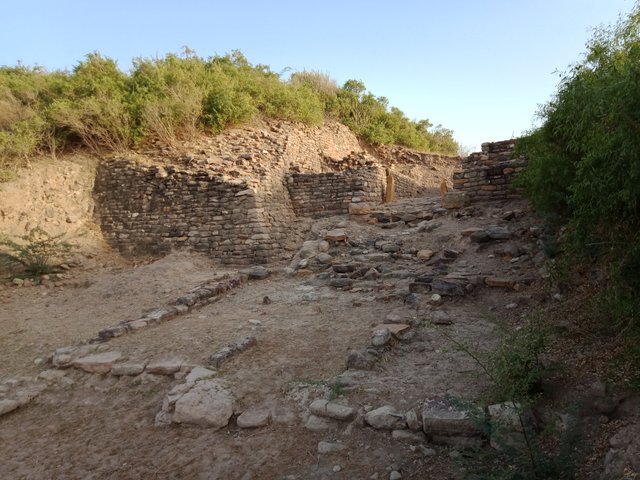
Polytheism or the belief in many gods were also generally expressed amongst ancient civilizations, even thou it is universally accepted that ancient religion had a pantheon of gods, it was but only on the surface, and the apparent multiplicity of gods were different variations, forms or moods of the same great deity.
To make sense of the world man began to apply human characteristics upon non human things, This is called anthropomorphising, the interpretation of nonhuman things or events in terms of human characteristics, derived from the Greek anthropos (“human”) and morphe (“form”), the term was first used to refer to the attribution of human physical or mental features to deities.
The most ancient religion still existing in the modern world is Hinduism, and Hinduism derives from India. The Holy books of Hinduism are many but the literature that make sup the foundation of Hinduism is called the Vedas. As I already mentioned before, the principal and, taken in its totality, the oldest of the four Vedic hymnodies is the Rig-Veda. The Sanskrit word ric, which for euphonic reasons is changed to rig, means literally “praise." It refers to a “chant” or “hymn" in praise of the Divine. Each hymn is also called a mantra or sacred “utterance" charged with numinous power.
When we engage in foreign cultures, it is, for the rest, difficult to discern what are legitimate experiences and what belongs to a cultures myth formation and or speculative thinking originating from a scholar or the clergy in any given religious society.
However, we know that symbols were used to formulate religious thought and through a story metaphorically told could express multiple motives and meanings.
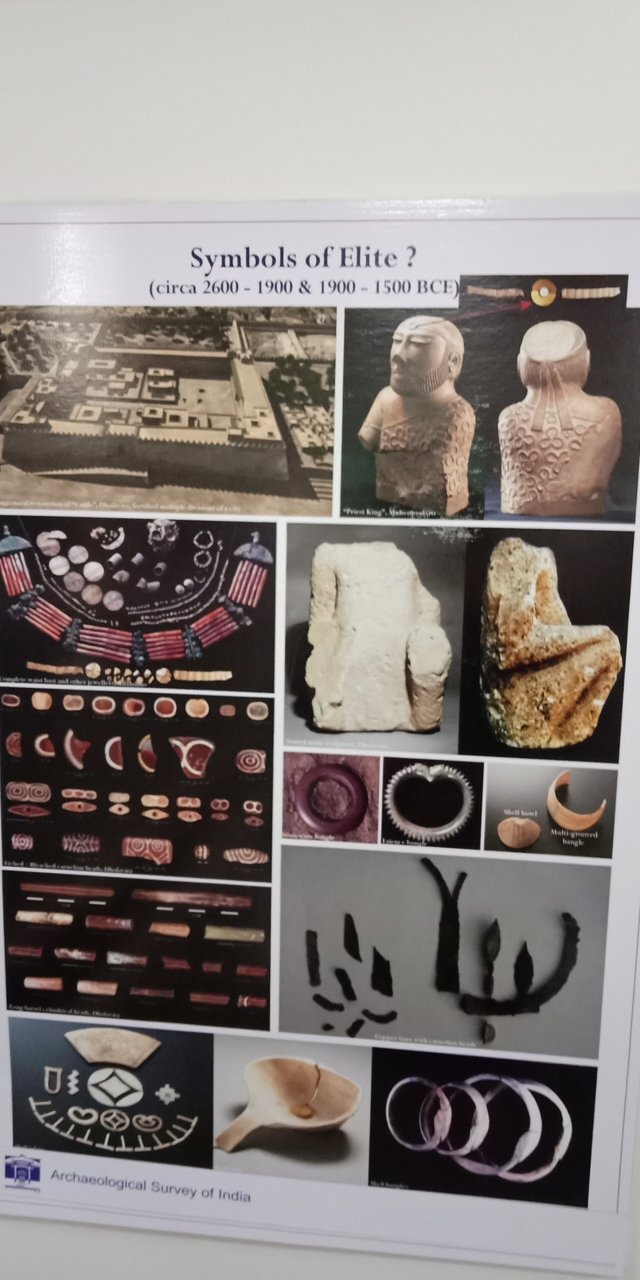

Symbols are the medium from which ideas move between two units. Think about it; everything we use concerning communication is symbolic, we can determine if somebody is satisfied or not by just observing their symbolic acts. When we explore the length between the earth and the sun, we use numbers, numbers are symbols, and inputting these symbols together we get calculations through which predictions can be made. The same goes for language; the foundation of a word is an alphabet; an alphabet is built on letters, letters are symbols, and in the process of putting these symbols together, these can potentially make up a story.
Symbols represent values and qualities that are not available to us without an association mechanism. An animal can be brave, a man can be brave, but quality of bravery cannot be seen unless action is personified. Therefore, symbols consists of the visible symbol and the invisible value or quality it represents to those that use it at any given time.
On boulders and great rocks we find basic and geometric forms of symbols, these devices are referred to as picture writing, perhaps these symbols are a symbol of immortality. In other words, he wanted to be remembered by those that came after him; he wanted those that came after to remember the forest and the hunt, he, therefore, searched for his immortality with the use of symbols. Ancient man believed that one day his body would perish, but his dreams and aspiration might live on to those that have continuance in life.
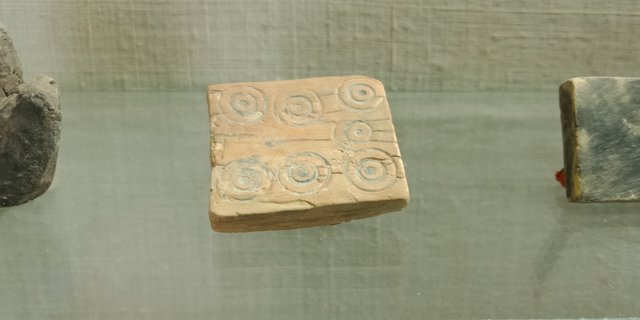
Moreover, where did he find his symbols if not in nature, there is much to indicate that language started in the sounds of nature, additionally, in much of the same way the earliest symbols are borrowed from nature. Symbolism is the language of the Mysteries; in fact it is the language not only of mysticism and philosophy but of all Nature, for every law and power active in universal procedure is manifested to the limited sense perceptions of man through the medium of symbol.
Manly P Hall in The Secret Teachings Of All Ages, Page 38
So, the most famous example is thunder, ancient man could not possibly understand the elaborate scientific explanation of thunder. Instead, they applied human qualities to thunder and started to make up stories about Indra, the god of thunder, with his thousand bolts of light. These stories are symbolic representations of a complex idea, and what value it brought forth to humanity at large.
In other words, all religions are a set of symbols, in this regard, a religious text cannot be considered to be the most excellent collection of historical facts ever known to man. However, symbolic stories that portray humanity's strive towards understanding himself and nature around him.
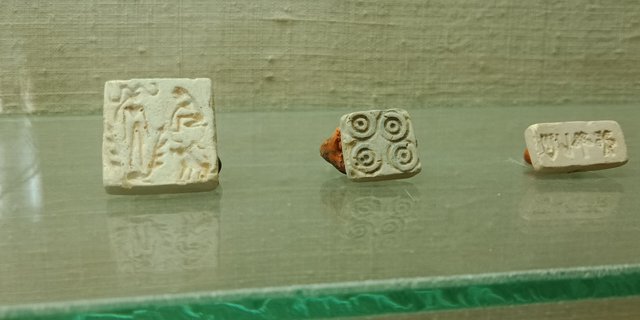
One of the earliest symbols for God in our world was the Sun, it is wrong to assert that ancient man believed the sun to be God, but they used the suns life-giving properties as a symbolic analogy for what God is and the principle it might possess.
To use the sun as a symbolic expression of deity is a universal fact, the most obvious reasons are that the sun is 99.9% of all the matter of our solar system, in other words when the sun changes we change no mystery needed.
However, for ancient man, their understanding was a bit more intuitive rather than scientific. Imagine living at the dawn of civilization let's say 20000 years ago. Every day, the darkness of night swept over humanity like a curtain of fear, being worried about vultures and other creatures lurking in the dark. Every day was a struggle between knowledge and ignorance, between the light of day, and the darkness of night.
The search for God comes to those that live through lean and distressful times, but when morning came the prayers seemed to have been answered, and a savior arose on the horizon bringing light and warmth.
What man fears the most is the unknown, simply stated, the greatest enemy to man has always been the darkness of night and the fear of being kept in intellectual darkness. Being the antithesis to dusk, the ancients began to apply the quality of light and wisdom to the sun mainly because it seemed to chase the darkness away and so it gave them the potential of seeing and experiencing their world. The sun was considered to be a great god that gave of his life for us to live and so being the provider of life the sun became the saviour god of our world, the enlightened one, the bringer of light, life and warmth.
Through the movement of the sun across the sky, the ancients began to calculate their days with the help of the sun. One day became a day in the great Solar deities life.
Considering night time with its gruesome environment a land of evil, the sun god was according to the ancients slain every day but to be resurrected from this land the next morning. Symbolizing the ascent in the East and the descent of the sun in the West, it is through this celestial phenomenon where the idea of reincarnation could have it's origins too.
.png)
Being primarily a symbol of the sun the Swastika is a very old ideogram, and the first preserved occurrences are from the Sumerian and Indus culture. The word swastika comes from Sanskrit and is divided into three, Su = good and asti = be with, and the suffix ka when the arms are angled clockwise. The swastika should be seen as a variation of the cross in a circle. The ends of the cross are broken in one direction, suggesting a direction of a movement and or a dynamic. It is therefore evident that the sign should have something to do with the changes of the seasons.
In the trenches of Mohenjo Daro seals with this profound symbol was discovered. Even today the Swastika is one of the most important symbols of Indian religious thought.

The swastika is linked to the Eastern religions where the symbol also originates. In Hinduism, the clockwise swastika is the symbol of the Sun god Surya, making it primarily a sun symbol, the anticlockwise swastika symbolizing night and the goddess Kali. In Jainism, the four arms mean the existing levels of the world of God, the human world, the animal world, and the underworld, or Spring, Summer, Autumn and Winter. Within the Buddhist iconography, Swastika was considered the seal of the Buddha's heart.
The circular disc with horizontally extending wings, and the disc with the four-star star were mutually exclusive symbols of the same phenomenon. In this case, this Sumerian symbol would be a symbol of, the supreme god, the sun, the power, or the life force. This symbol was also representing Marduk, the sun god of Sumer. Exactly in the same way the Swastika symbolised one of the most prominent Gods of the Vedas, Surya or the sun.
According to the symbolist and French Intellectual Rene Geunon, the Swastika symbolises an astronomical phenomena namely the constellation, the small and the big dipper. If we were able to speed up the motions of the heavens, it would like as if the polestar located in the small dipper stood still and all other constellations would encircle this still north position.
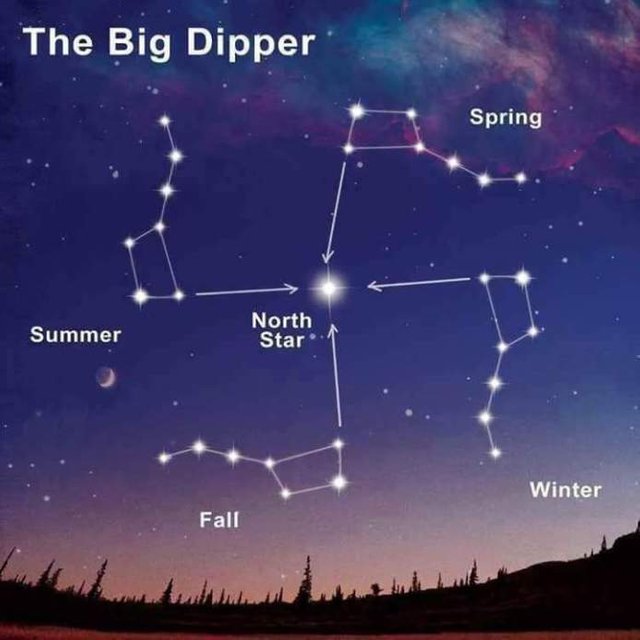
And so, for ancient man it was easy to measure the changes of the seasons only by knowing and measuring the angle of the small and the Big Dipper in relation to the North pole that even today has a clear astronomical relationship. And so one of the angles came to be understood as, spring, summer, autumn and winter.
According to Rene Guenon, this is also where the symbolism of the seven wise sages of India derive from, from the seven stars making up the constellation, the Big Dipper.
The layout of Harappan towns and cities provides evidence that the Harappans had a good knowledge of astronomy.
‘’The orientation of the main streets in cities and towns followed the cardinal directions. However, Holger Wanzke’s study (1987) of the orientation of Mohenjo-Daro’s streets demonstrated that they deviated from the north-south line by 1–2 degrees.
A slight divergence was also observed at other Harappan sites. Wanzke, therefore, proposed that the Harappans were establishing the cardinal directions by sighting on the stars, in the case of Mohenjo-Daro using the profile of the Kirthar Mountains to the city’s west as the horizon against which to record their movements. A star whose setting in the west would have been clearly visible to the inhabitants of Mohenjo-Daro was Aldebaran (Rohini); its setting point, slightly north of cardinal west, exactly matched the orientation of the city’s streets.’’
Jane Mcintosh, The Ancient Indus Valley: A New Perspective, Page 231-232
References:
The Cambridge History Of India, Mortimer Wheeler
The Search For The Cradle Of Civilisation, Georg Feuerstein, Subhash Kak, and David Frawley.
History Of World Societies,
A History Of India, Herman Kulke, Dietmar Rothermund
Rig Veda
Bakliwali PC and Grover A.K, Signature and migration of Sarasvati river in the Thar desert, Western India. Rec Geol, sur,
https://www.outlookindia.com/magazine/story/we-are-all-harappans/300463
India The Ancient Past, Burjor Avari
Symbolic Lexicon, Hans Biederman
https://www.britannica.com/topic/animism
An Atlas Over World Religion, Ninian Smart
Jane Mcintosh, Ancient Indus Valley: A New Perspective
https://www.webcitation.org/query?url=http://www.geocities.com/ifihhome/articles/bbl002.html&date=2009-10-26+00:22:02
Irfan Habib, Indus Civilization
Ernest Busenbark, Sex symbols and the Stars
https://www.merriam-webster.com/dictionary/fertility%20cult
Ideograms and Symbols, CG Ljungman
